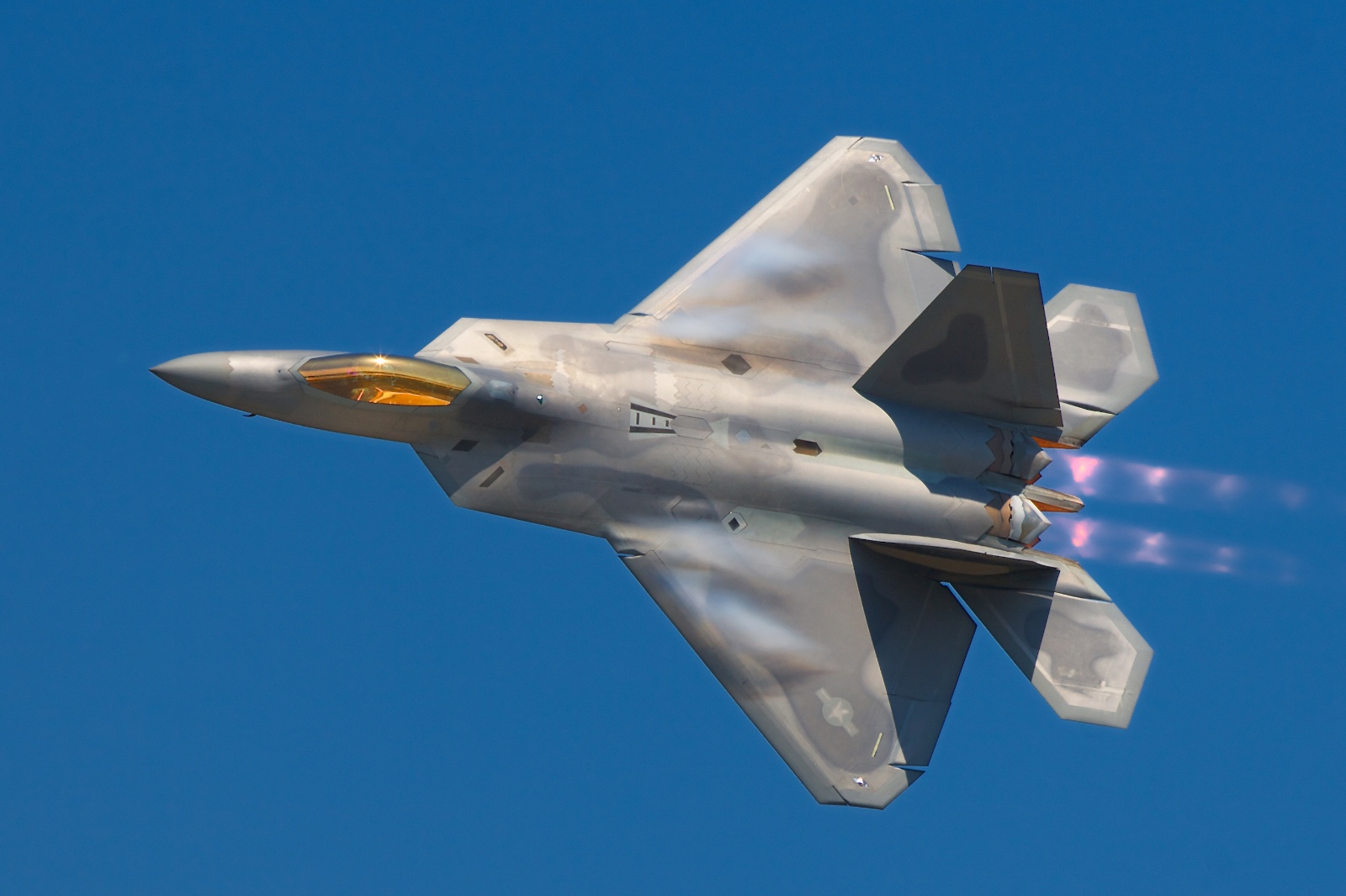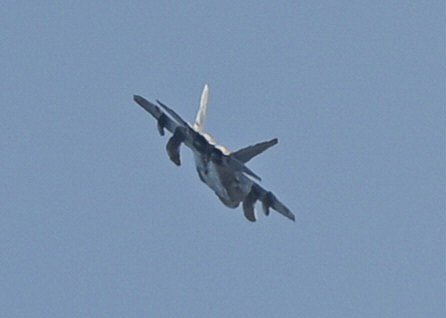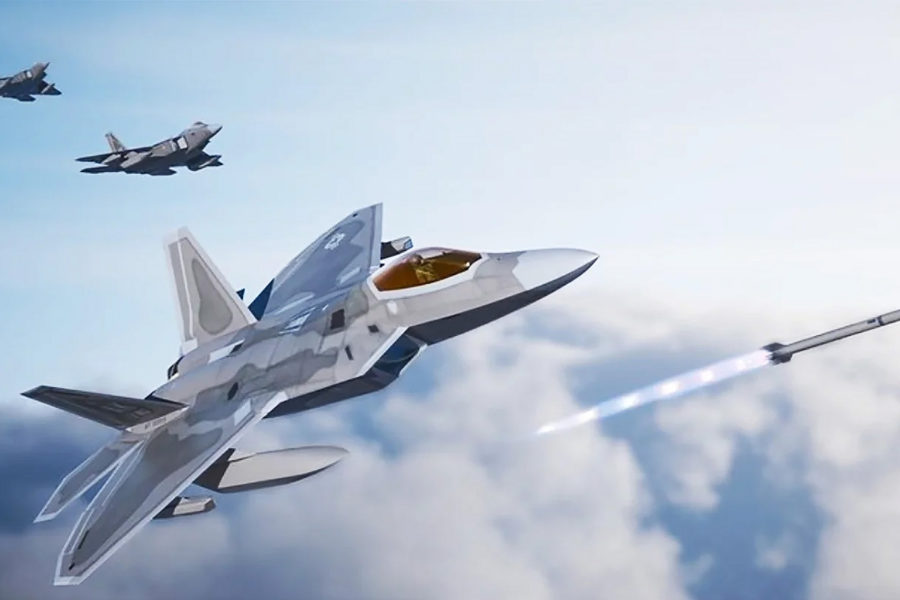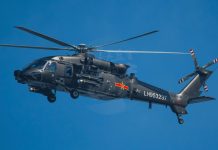The US Air Force (USAF) is testing new, upgraded sensor systems on the F-22 stealth aircraft. The aim is to extend the service life of the F-22 Raptors, which were originally slated to be replaced by the Next Generation Air Dominance (NGAD) program.
The enhanced sensors, which currently remain classified, will eventually be used on the NGAD, as reported by Air and Space Forces Magazine, citing a recent announcement made by Brig. Gen. Jason D. Voorheis, Program Executive Officer for Fighters and Advanced Aircraft, Air Force Life Cycle Management Center, Air Force Materiel Command.
Brig. Voorheis informed reporters last month: “The F-22 team is working really hard on executing a modernization roadmap to field advanced sensors, connectivity, weapons, and other capabilities.”
The official further announced that the Raptor team had conducted six flight test efforts to demonstrate advanced sensors as of July 2024. Currently, the service is planning a rapid prototyping effort to get them on the jet. “We’re executing that successfully, and that will lead to… a rapid fielding [Middle Tier of Acquisition program] in the near future,” Voorheis said.
Though the USAF has withheld the details of the sensors, a photograph of the Raptor surfaced on social media in March 2024, showing underwing infrared sensor pods along with external fuel tanks.
This was seen as a final indication that the Raptor was finally being equipped with Infrared Search-and-Tracking (IRST) pods, as planned. These pods are designed to enhance the situational awareness of the F-22 Raptor and enhance its detection of other low-observable aircraft.

The ongoing IRST tests were also detailed in the USAF’s budget request for the F-22 for the Financial Year 2025. An “advanced Infrared Search and Track sensor” capability was specifically included in the Air Force’s planned 2025 Fiscal Year budget for the F-22’s “sensor enhancement.” The plan was for such efforts to “continue to mature, leading to a planned F-22 flight test demonstration” in Fiscal Year 2024.
A recent report indicated that Service officials described the sleek, sharp pods seen on a test F-22 as advanced infrared search-and-track (IRST) systems. These systems might also incorporate additional sensors, allowing the F-22 to identify low-observable aircraft and bolstering its combat capability.

While the official did not detail plans about how the sensors would be integrated with the NGAD, it is common knowledge that the USAF has been testing crucial technology meant for its next-generation aircraft on the F-22 Raptor.
Last year, reports indicated that the USAF transformed its F-22 Raptor Combined Test Force (CTF) into the Air Dominance Combined Test Force (ADCTF) and tasked it with conducting flight tests for the Next Generation Air Dominance (NGAD) family of systems.
At that time, the service said that Air Dominance CTF would continue to test enhancements for the F-22 to maintain lethality against immediate threats in addition to testing NGAD technology. It is widely believed that the dual emphasis would maintain the F-22’s effectiveness and relevance in combat while facilitating the development and testing of the NGAD systems.
F-16s “Sitting Ducks” For Russian MiG-31 Fighters? Putin Warns Of Consequences Over Fighting Falcons
The F-22 Raptor has been projected as the most advanced combat aircraft in the world and is considered to be the mainstay of the US Air Force. This is why the service has been actively seeking new avionics, radar, targeting sensors, weapons, glass cockpit displays, and artificial intelligence for its F-22 stealth fighter for several years to maintain air superiority in the face of Russian and Chinese 5th-generation stealth fighter technological advancements.
The F-22 Raptor was expected to be replaced by the USAF’s NGAD crewed aircraft in the 2030s. However, with the uncertainty surrounding the program, it has become imperative to keep the Raptors serviceable, combat-capable, and up-to-date with modern technology, especially amid the looming threat of a war with China in the Indo-Pacific.
NGAD Program Not Dead, But The Raptors Have No Replacement
Air Force officials have claimed for years that the F-22 would likely be retired by 2030. However, in recent months, authorities have changed their stance, with Voorheis remarking, “I don’t have a date for you regarding the F-22’s retirement.”
“What I can tell you is that we are hyper-focused on modernization to sustain that air superiority combat capability for a highly contested environment for as long as necessary,” he added.
Internal discontent has been expressed regarding plans to retire the F-22s in the 2030s. Some within the service have argued that the aircraft is supposed to have enough structural life to last until the 2040s. However, they have flagged that the sensors installed in adversaries’ fighter jets were more sophisticated than those in the advanced Raptor—a requirement that is being addressed now.
A lot has changed recently. Earlier this year, the USAF disclosed it was re-evaluating its sixth-generation ‘Next Generation Air Dominance’ program due to its high costs and the need to prioritize resources for other important programs.
Days later, addressing all concerns about shelving the NGAD, USAF Secretary Frank Kendall reassured that the program was not dead and that the service was working on creating an advanced next-generation fighter. However, a redesign was needed to control expenses and enhance the integration of loyal wingman drones.

Amid all the rancor and uncertainty surrounding the NGAD, a key official in the USAF, the Air Combat Command Chief, Gen. Kenneth S. Wilsbach, said that the Raptors had no replacement. “Right now, frankly, there isn’t an F-22 replacement,” said Gen. Wilsbach. “The F-22 is a fantastic aircraft. We’re planning several upgrades to the jet as we speak, and there is no official replacement to the F-22 right now.”
Voorheis proposed a new Government Reference Architecture Computing Environment, or “GRACE,” as the key to the F-22’s possible prolonged lifespan. According to him, the open architecture software will allow “non-traditional F-22 software” to be loaded on the fighter. He further added that it would permit “additional processing and pilot interfaces.”
Air Force officials have begun to reschedule the sixth-generation NGAD, which was once thought to be the Air Force’s top air superiority fighter and the replacement for the F-22. According to Voorheis, the updated technology on the F-22 “supports all future programs”, including NGAD. “And moving forward, we’ll make use of all that technology on any platform.”
Together, the upgrade efforts “will ensure that the F-22 maintains its position as the world’s [first] air superiority fighter, and that first-look, first-shot, first-kill advantage,” according to Voorheis. The technologies being developed for the Raptor will be ported to the NGAD “to ensure our ability to achieve air superiority in the future, highly-contested environment”, and the F-22 “is our bridge to NGAD”.
- Contact the author at sakshi.tiwari9555 (at) gmail.com
- Follow EurAsian Times on Google News




